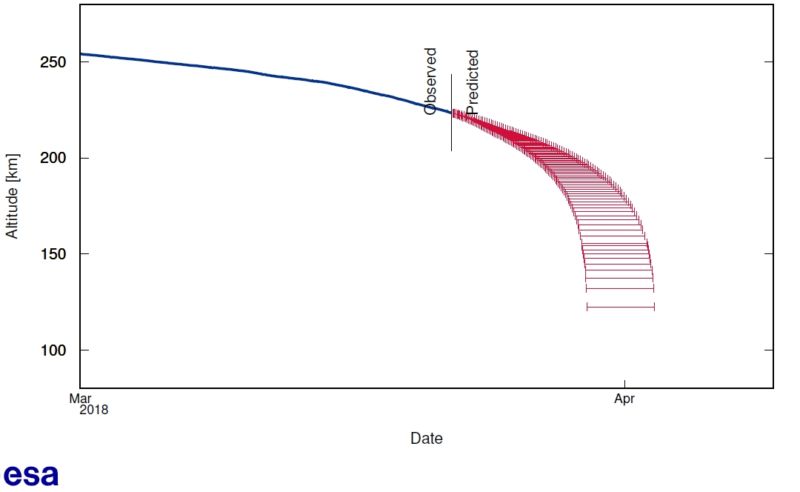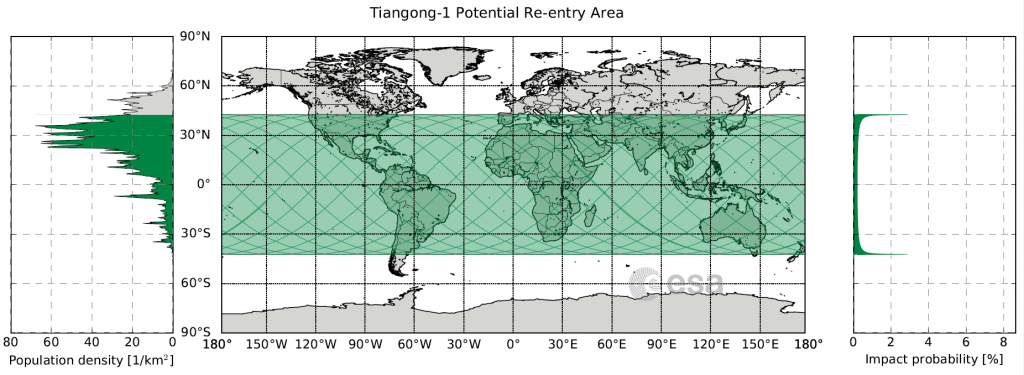
China's first space station may fall to the ground as soon as one week from now, and certainly within two, orbital debris experts with the European Space Agency (ESA) say. Scientists, however, still cannot predict with any confidence where pieces of the 10.4-meter long Tiangong-1 station, which is traveling at 17,000 km/h, will land.
The latest estimate from the ESA indicates the station will enter Earth's atmosphere between March 30 and April 3, at which time most of the station will burn up. However, the station is large enough—it weighed 8.5 tons when fully fueled but has since used much of that propellant—that some pieces will very likely reach the planet's surface.
Beyond the fact that the station will reach a final impact point somewhere between 42.8 degrees north and 42.8 degrees south in latitude and probably near the northern or southern extremity of those boundaries due to Tiangong-1's orbital inclination, it is not possible to say where on Earth the debris will land. However, the likelihood of it affecting humans is quite low. Scientists estimate the "personal probability of being hit by a piece of debris from the Tiangong-1" is about 10 million times smaller than the annual chance of being hit by lightning.

No nation likes to lose a piece of space hardware like this. NASA, for example, has already spent years developing a plan to ensure the International Space Station is de-orbited over an ocean when it comes down.
China, too, had initially planned for a controlled reentry for the Tiangong-1 station. The vehicle launched in 2011, and it served as an initial test bed for life-support systems in orbit and as a precursor for China's plans to launch a larger space station in the 2020s. For several years, the Chinese space agency employed periodic re-boosts to keep Tiangong-1 at an altitude of 300km to 400km above the Earth's surface. (All satellites and space stations are subject to this weak but persistent atmospheric drag). But in 2016, Chinese engineers lost control of the space station and the ability to fires its engines.
Without a means of steering the station, that left the unpalatable option of an uncontrolled reentry. China has shared information about the station's position with international officials, and the country has shared daily updates on its human spaceflight website.
In the extremely unlikely event that a piece of space debris turns up in your backyard in the next two weeks, your best bet is to call the authorities. The debris could very well contain traces of hydrazine or other nasty propellants best not touched.
https://arstechnica.com/science/2018/03/chinese-space-station-will-fall-to-earth-within-two-weeks/Bagikan Berita Ini














0 Response to "Chinese space station will fall to Earth within two weeks"
Post a Comment